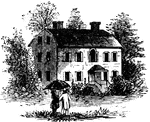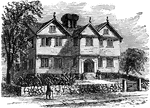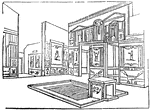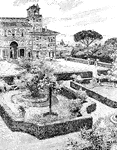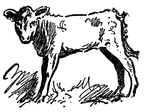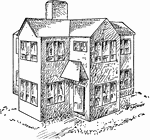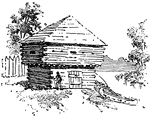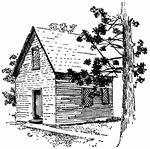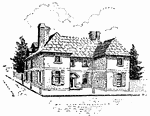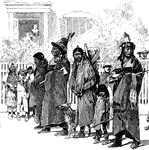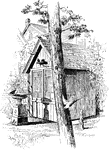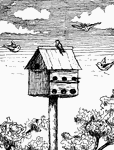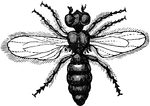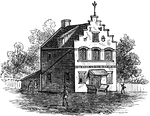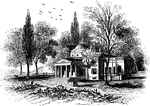
Monticello
"Monticello, Governor Jefferson's place of retirement. This venerated mansion is yet standing, though…

Tryon Palace
"Front view of Tryon's Palace. The view here given was the north front, toward the town. The center…

Guilford Battle-ground
"View of the battle-ground. This view is from the eminence southwest of the site of old Guilford Court…

Rocky Mount
"View at Rocky Mount. This view is from the garden-gate at Mrs. Barkley's, looking northeast. On the…

Rugeley's
"View at Rugeley's. This view is from the south side of the bridge. The counterfeit cannon was placed…
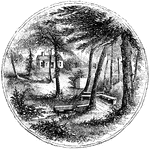
Hobkirk's Hill
"View at the Spring; Hobkirk's Hill. It is at the hed of a ravine, scooped out of the northeastern slope…
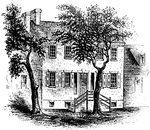
McIntosh's House
"Dwelling of General McIntosh. This house is the third eastward from Drayton Street, and is said to…
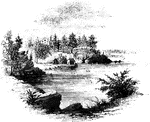
Turtle Bay
"View at Turtle Bay. Turtle Bay is a small rock-bound cove of the East River, at the foot of Forty-seventh…
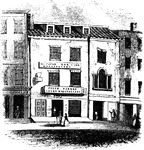
Washington's Head-Quarters
"Washington's head-quarters. I was informed by the venerable Anna van Antwerp, about a fortnight before…

Gravesend Bay
"View at Gravesend Bay. This view is from the road on the high shore, a little below Fort Hamilton,…
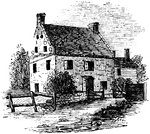
Cortelyou's House
"Cortelyou's House. This house, built of stone, with a brick gable from eaves to peak, is yet (1852)…

Washington's Head-Quarters
"Washington's head-quarters. The house occupied by Washington while the army was at White Plains is…

King's Bridge
"View at King's Bridge. This view is from the southwest side of the stream, from near the tide-mill.…

Washington's Quarters
"Washington's Quarters. This is a view of the southwest front of the mansion. The room occupied by Washington…
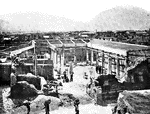
Pompeii
"Excavating a house at Pompeii from eruption of Vesuvius, which buried the cities of Herculaneum and…
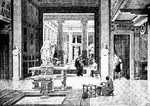
House
"A Roman house. In early times the private houses of the Romans were very simple, showing little attempt…

Charles V
"Charles V ruled over wider dominions than any European sovereign since Charlemagne. He belonged to…

stockade
"A stockade. Those settlers who lived outside of Roston and the few seaport villages built palisades…
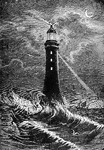
Eddystone Lighthouse
"Eddystone is a group of gneiss rocks, daily submerged by the tide, in the English Channel, 9 miles…

Lake Dwellings
"The earliest account of lake dwellings is to be found in Herodotus, who describes a Thracian tribe…

City Hall of New York
"New York is a city in Southern New York; coextensive with New York, Kings, Queens, and Richmond counties,…

Balcony of House in Nuremburg
"Nuremburg is a city in the Bavarian province of Middle Franconia, Germany; on the Pegnitz river; 95…

Pompeiian House
"House construction consists mainly of concrete or brick, and sometimes of stone blocks, especially…
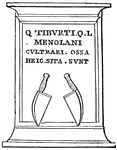
Culter
"A knife with only one edge, which formed a straight line. The blade was pointed, and its back curved.…

Bust of Aspasia
"Pericles, after divorcing a wife with whom he had lived unhappily, took his mistress Aspasia to his…

Pistor
"A baker, from pinsere, to pound, since corn was pounded in mortars before the invention of mills. At…

Puteal
"Puteal, properly means the enclosure surrounding the opening of a well, to protect persons from falling…
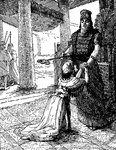
Esther Approaches King Xerxes
"Now it came to pass on the third day, that Esther put on her royal apparel, and stood in the inner…
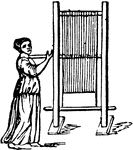
Tela
"Tela, a loom. Although weaving was among the Greeks and Romans a distinct trade, carried on by a separate…
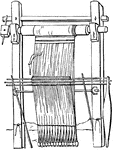
Tela
"Tela, a loom. Although weaving was among the Greeks and Romans a distinct trade, carried on by a separate…
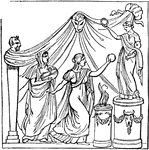
Velum
"Velum, a curtain. Curtains were used in private houses as coverings over doors, or they served in the…
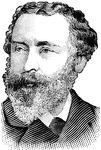
Henry Labouchere
Labouchere was a journalist and British politician who proposed the abolition of the House of Lords.

John Griffin Carlisle
Carlisle served as the Speaker of the United States House of Representatives and United States Secretary…


